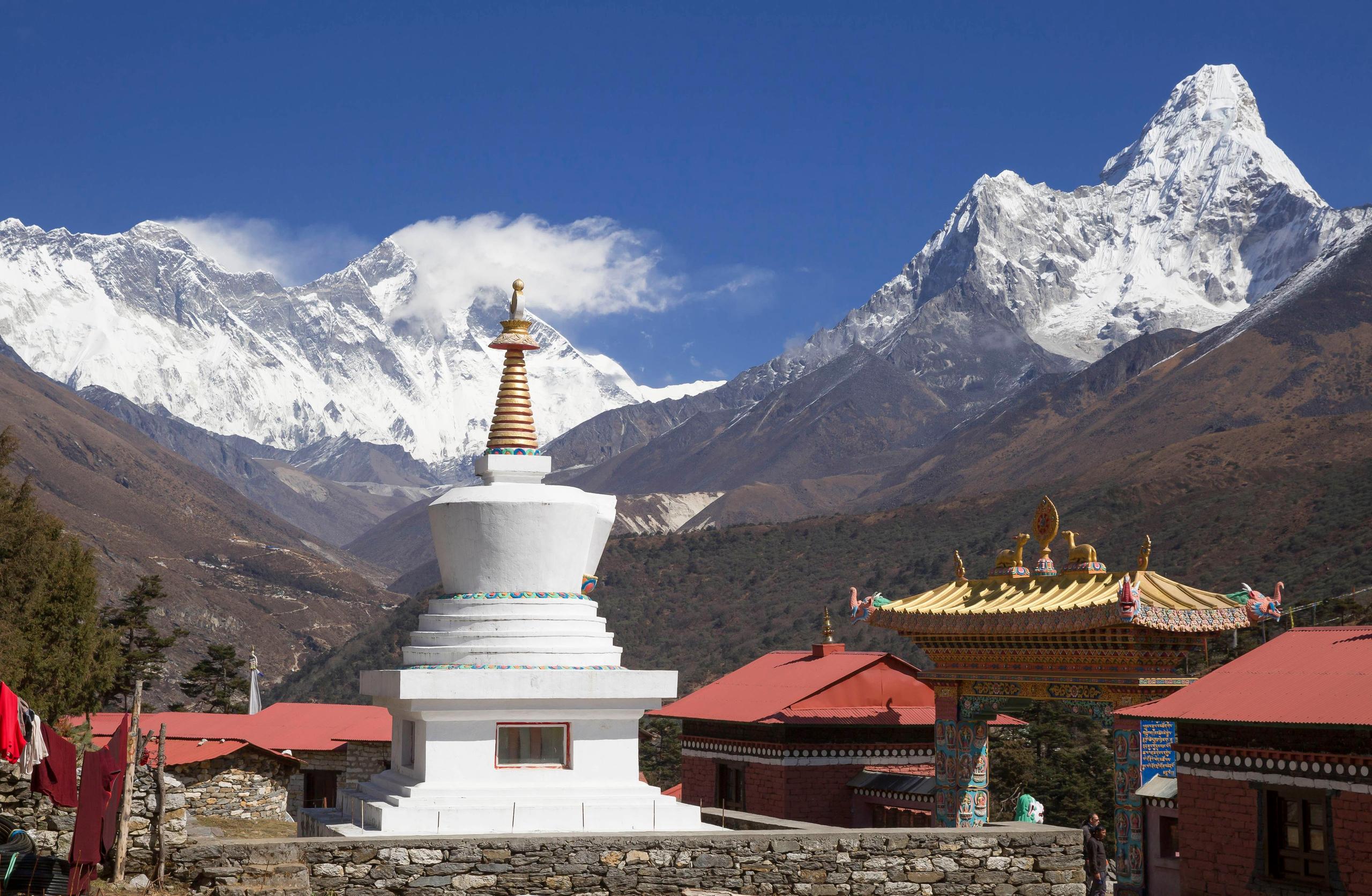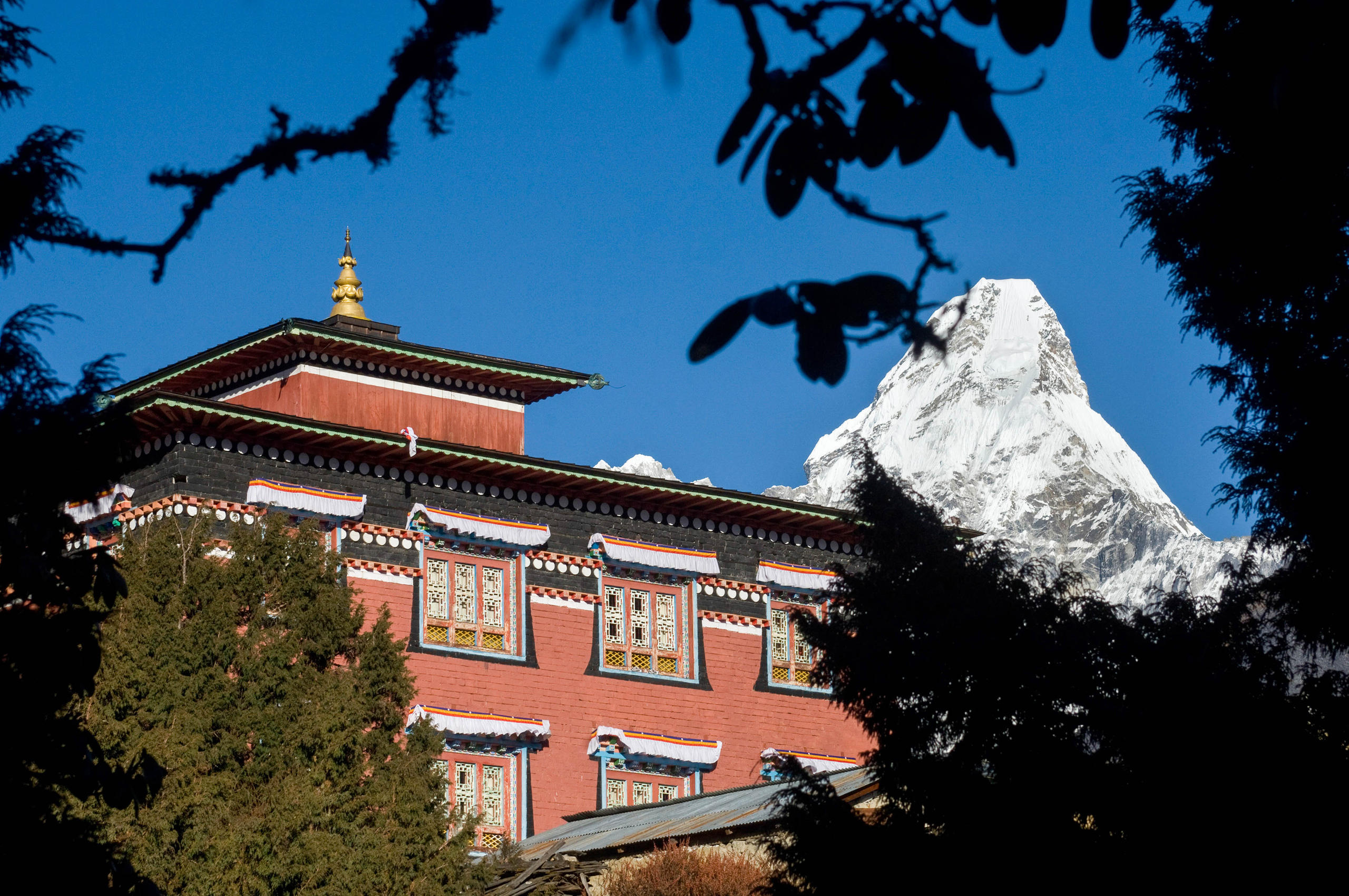
Funeral held for Swiss climber below Everest

Family, friends and fellow climbers gathered below the world’s highest peak on Thursday to mourn the loss of and say farewell to Swiss alpinist Ueli Steck.
Within view of the mountains where he died at the age of 40, Steck’s body was cremated at a site just a few hundred metres away from Tengboche Monastery in Nepal’s Khumbu Valley.
A separate ceremony will be held in Switzerland, where the family will bring some of his ashes. The “farewell party” and “celebration” will welcome friends, acquaintances, professional colleagues and the public, the family said. The date and location have not yet been decided.
Steck’s wife Nicole, their parents and other ceremony-goers surrounded a funeral pyre as monks in burgundy robes offered prayers and played music around 3,867-metre-high Tengboche, an important Buddhist monastery in the Khumbu region, atop a plateau along the popular trekking trail to Mount Everest’s base camp.
The family described the ceremonial, carried out according to Nepali tradition over about three hours, as “solemn and impressive, sad and at the same time liberating”, in a statementExternal link. “The family gave their sincere thanks to the monks of Tengboche monastery for the hospitality and the most dignified way of saying goodbye to Ueli.”
More details
The cause of the accident is still unknown, the family said, but more details about his last movements are emerging.
On April 29, he ascended from Everest base camp to Camp 2 at about 6,400 metre to climb and acclimatise more the next day on Everest’s traditional route to the almost 8,000-metre South Col, then return to Camp 2 in the same day.
From Camp 2, he noted that the conditions on the Nuptse wall were ideal, so he decided that night to change his plan and to climb up to Nuptse the following day.
On April 30, the day of his death, he started out at 4:30 am. Together with the Frenchman Yannick Graziani, he crossed the glacier. Afterwards, Graziani continued on the Everest normal route towards Camp 3, while Steck entered into the Lhotse flank.
His accident occurred around 7,600 metres, at about 9:00 am, only a few hundred metres lower than Nuptse’s 7,861-metre summit. His body was finally recovered by the Italian helicopter pilot Maurizio Folini at a height of about 6,600 metres, and transferred to the hospital of Katmandu.
Ties to Nepal
Steck’s body was brought by helicopter from Kathmandu to the monastery, which offers stunning views up toward the towering summits of Mount Everest, Ama Dablam and other major peaks.

He was killed on Sunday while acclimatising on Mount Nuptse for an extraordinary new challenge with his climbing partner Tenji Sherpa. His body was recovered from below Nuptse, where he apparently fell to his death while climbing alone, then flown to a hospital in Kathmandu for a postmortem examination.
A spokesman for Steck, Andreas Bantel, told Swiss tabloid Blick that the ceremony was kept to the closest circle of family and friends, and that it was a Buddhist ritual because of his love for the country and his many friends there. “This as a sign of Ueli’s connection to the country and the people,” Bantel said.
Speed, and more
Steck’s accomplishments extended well beyond speed – the name of one of his books – as he put up first ascents in the Himalaya that astonished other climbers because of his phenomenal audacity, fitness and skill.
But he first became well known for his speed records in the Alps, earning him the nickname “Swiss Machine”, which he disliked.
“He lived with it, but Ueli was very modest,” journalist and fellow climber Billi Bierling, who is translating Steck’s latest book from German to English, told news agency AFP. “In a way he knew he was quite extraordinary, but on the other hand he thought that, ‘If I can do it, everybody can’.”

In compliance with the JTI standards
More: SWI swissinfo.ch certified by the Journalism Trust Initiative















![The four-metre-long painting "Sonntag der Bergbauern" [Sunday of the Mountain Farmers, 1923-24/26] had to be removed by a crane from the German Chancellery in Berlin for the exhibition in Bern.](https://www.swissinfo.ch/content/wp-content/uploads/sites/13/2025/12/01_Pressebild_KirchnerxKirchner.jpg?ver=f05a5a9c)














You can find an overview of ongoing debates with our journalists here . Please join us!
If you want to start a conversation about a topic raised in this article or want to report factual errors, email us at english@swissinfo.ch.